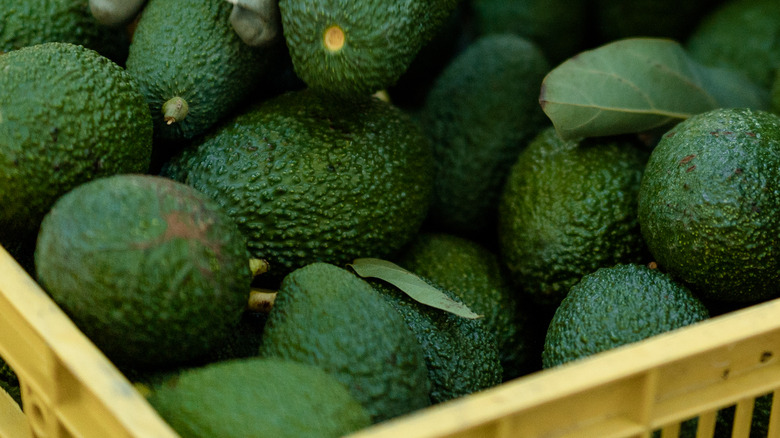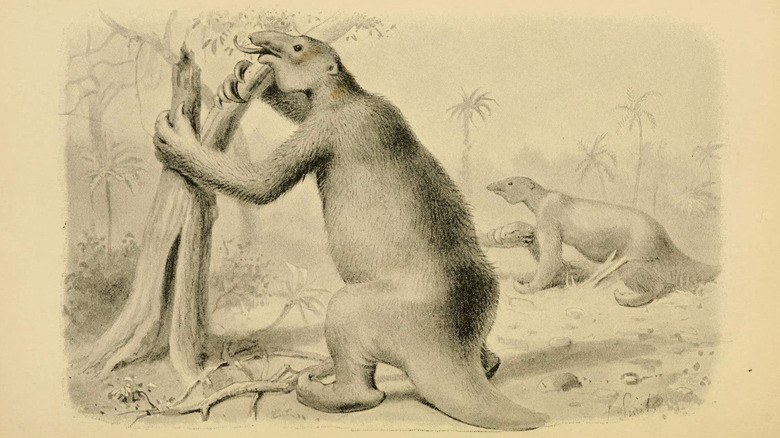The Bizarre Way Sloths And Avocados Are Connected
Here's a fact we bet you didn't know. During the Pleistocene geological epoch, which started 2.58 million years ago and ended around the time of the last ice age (11,700 years ago), avocados survived because of an unlikely ally. You see, according to Smithsonian, unlike wild fruits such as berries, which had small seeds and could thus be eaten and subsequently widely dispersed (ahem, the natural way) by a host of animals, the wild avocado had a seed — its pit — which was digestible only by large megafauna.
Enter the giant ground sloths of the Lestodon family. As Atlas Obscura explains, these massive prehistoric creatures, which grew up to 15-feet tall and could weigh up to four tons, were capable of eating avocados whole. Then, during the course of a digestion, which we'd prefer not to imagine, they would disperse the seeds away from the parent trees (meaning less competition for water and sunlight), which allowed the avocados to spread and flourish across North and South America.
That is, until around 13,000 years ago, when 80% of the planet's megafauna (animals weighing over 100 pounds) became extinct, including all of the Lestodon species.
How avocados survived the extinction of ground sloths
Writer Connie Barlow's book "The Ghosts of Evolution" helped to popularize the research done by botanist Dan Janzen and geologist Paul Martin (first published in the journal Science in 1982), whose central thesis was that many fruits in Central America were "adapted primarily for animals that have been extinct for 13,000 years." Barlow coined the term "evolutionary anachronism" (via Smithsonian) to explain these fruits, like the avocado, that once thrived due to favorable conditions brought on by the presence of coevolutionary partners, megafauna, but have in modern times become ecologically maladapted.
Since we know that the first recorded cultivation of avocados by humans didn't happen until around 5,000 BCE in Mexico, per National Geographic, that still leaves a period of about 6,000 years between the mass extinction of megafauna and the onset of farming. So how did avocados survive in the interim? How are we still making guacamole and avocado toast? No evidence exists from this avocado dark age, but Barlow thinks large cats like the jaguar, with large stomachs, may have helped. As she noted in "Haunting the Wild Avocado": "The identities of the dispersers shifted every few million years, but from an avocado's perspective, a big mouth is a big mouth and a friendly gut is a friendly gut. The passage of a trifling 13,000 years (since the Pleistocene extinction) is too soon to exhaust the patience of genus Persea."
Still, just don't forget to thank the giant ground sloths. It's likely avocados wouldn't have made it without them.

